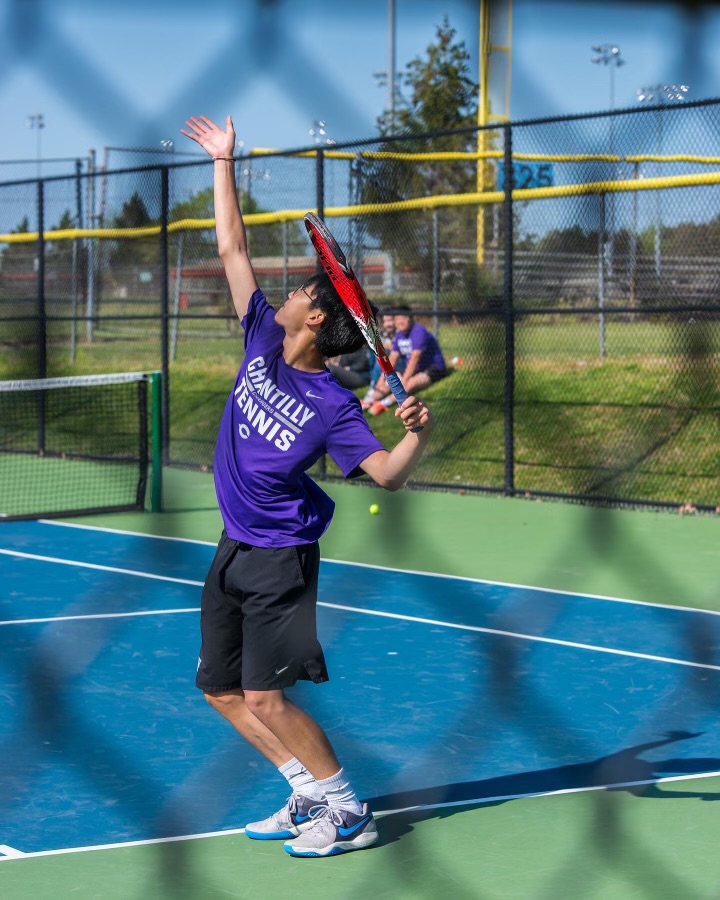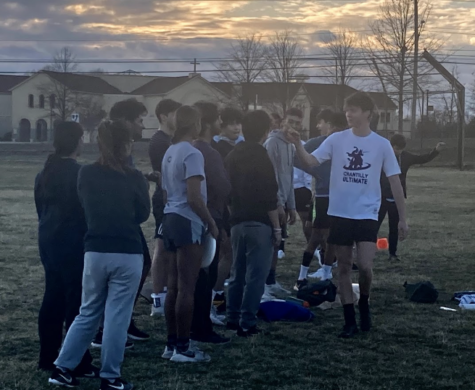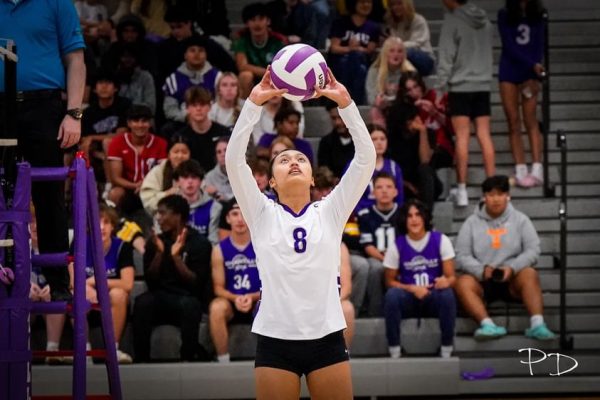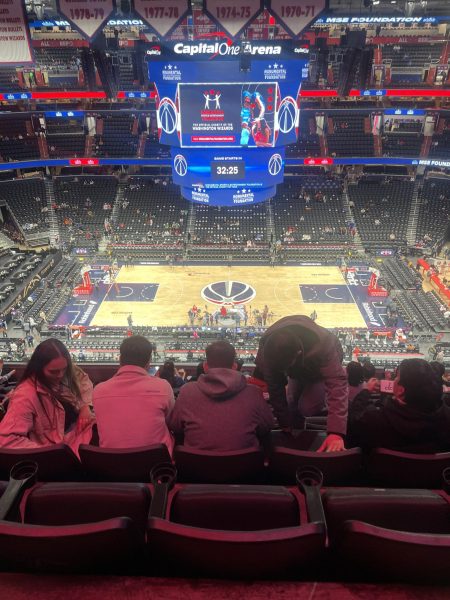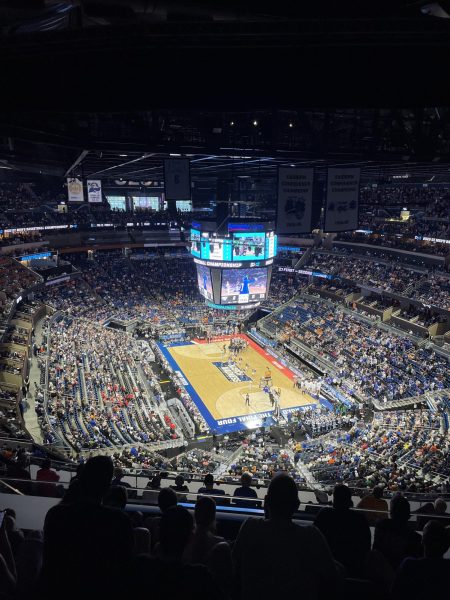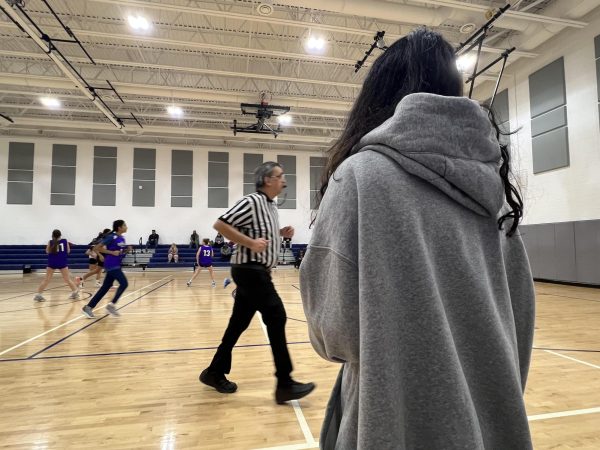Intramural sports provides recreational competition for students in college
Photo used with permission of Matt Dunham
Senior Adrian Kim serves an ace during his senior night game against Centreville High School on April 28. Kim won his singles match 10-0, and the team won 8-1 overall.
May 16, 2022
About 17% of the nation’s college student population participates in intramural sports, according to the American College Health Association. Intramural sports is the largest group out of the three organized college athletic groups, which are varsity, club and intramural.
One of the biggest differences between the varsity and club level and the intramural level is that while the varsity and club teams play against other teams from different universities, intramural players play against other players within the same college. Another difference is the level of competition.
Varsity is most competitive, as they represent the school’s official athletics, and oftentimes members on the team have been recruited by the school. While the club level is also competitive, it is not as serious as varsity. Students who are not on the varsity team but still want to compete at a good level often play club sports. Intramural is the least competitive, and is mainly for recreational purposes.
Most students planning to play intramural sports in college hope to continue a sport they have been playing for most of their childhood, and Finnegan is no different.
“I like soccer, but I’m definitely not as serious about it as I used to be,” varsity boys soccer player and senior Colin Finnegan said. “I’ve been playing soccer my whole life, and intramural soccer gives me the opportunity to. I also want an activity that’s fun and will keep me in shape, and I believe this is a good way to stay fit in college.”
While one of the main benefits of playing intramural sports is the recreational aspect of the activity, another benefit is that it carries less stress or weight on a student’s shoulders in terms of pressure. Anyone can join an intramural team regardless of experience, and the way to sign up depends on the school. While some schools require a small fee to become a member, other schools simply require a request to join a team.
“I decided to play intramural basketball instead of club or varsity because it’s less commitment and just a more relaxed atmosphere where I can focus more on having fun instead of results,” varsity girls basketball player and senior Maya Parikh said. “I’m looking forward to making new friends and playing basketball for fun without any pressure of representing an entire college.”
Another purpose for intramural sports is to be able to have more time for other activities and priorities. Intramural sports allow students to focus on other aspects of their life while staying fit.
According to Healthline, it is common for freshmen in college to gain weight quickly, known as the freshman 15, where first-year students experience changes in eating habits and a decrease in exercise due to the rigor and time commitment of coursework. However, intramural sports allows students to stay fit while also releasing stress.
“Managing my schedule at college while doing an intramural sport would be a bit easier, as studies are more of a priority for me,” boys tennis player and senior Adrian Kim said. “I will be more committed and competitive in other areas of my life, so I like that I can unplug in a more relaxed way, as opposed to being immersed in another competitive environment like club or varsity.”
Finnegan, just like most other participants in intramural sports, will also be putting more effort and commitment into career-related areas of their college life.
“I might end up getting a job in college, so that could also take up some of the time that would usually be going towards intramural soccer,” Finnegan said. “Intramural sports allow me to be in shape while staying committed to my career goals and work opportunities.”
Other than physical benefits, intramural sports and activities also help students expand their social circle in college. While a lot of time can be spent studying alone or in small groups, students can increase their connections outside their major and classes through sports.
“I hope to gain more experience in intramural tennis, as well as gain new friends in my college through similar interests,” Kim said. “I look most forward to finding people not only my age but growing my connections through upperclassmen as well, which can really help with networking for potential internships or jobs.”


